Whereas Kashmir has been the focus of national and international attention for over seven decades, Pak-occupied Kashmir (POK) and Gilgit-Baltistan (GB) have eluded attention. This is because the ‘Other Kashmir’ across the LOC has been kept under iron curtain by successive Pakistan governments. Pakistan assumed direct control of Gilgit-Baltistan in 1947-48 and re-designated the area as Northern Areas. At the same time, it called Pak-occupied Kashmir as ‘Azad Kashmir’, but in actual practice this territory has been Azad (free) only in name. There is a clear cut discrepancy in Pakistan’s policy and its political and constitutional relationship with POK and GB. While claiming that Jammu & Kashmir is disputed territory, GB has been annexed and colonized by Pakistan. It is only as late as in 2009, that Pakistan restored its name Gilgit-Baltistan replacing the term ‘Northern Areas’. Now there are moves to formally integrate GB as the fifth province of Pakistan, which would jeopardize Pakistan’s stand over the disputed character of Jammu & Kashmir.
Both POK and GB constitute one-third of the total area of undivided Jammu and Kashmir. With an area of 5,134 sq. miles (13,297 sq. kms.), and about four million people, POK has 10 administrative districts (Muzaffarabad , Hattian Bala, Neelum, Bagh,Poonch, Sudhanuti, Mirpur, Kotli , Bhimber and Haveli). GB has an area of 28,000 sq. miles (about 73,000 sq. kms) with a population of about two million people. It has 10 districts-Ghizer, Gilgit, Hunza, Nagar (all in Gilgit Division), Ghanche, Skardu, Shigar and Kharmang (in Baltistan Division) and Astor and Diamer (in Diamer Division). The book under review is divided into seven sections, all having 23 chapters. It provides a comprehensive insight into Pakistan’s policy in POK and GB and internal political dynamics in the region. As the author states, “it looks at POK in terms of the aspirations of its people and the policies of Pakistan”.
First section ‘The Beginning’ has three chapters – Invasion; Pakistan-occupied Kashmir Government; The Jammu and Kashmir Issue in the UN. Pakistan has followed “remarkably consistent policy over seven decades”, be it the suppression of Sudhan revolt in POK in 1950s, separation of Northern Areas from POK and its administration under the Frontier Crimes Regulations till 1974. POK got an elected Assembly only in 1975 and GB got one in 2009. But in both territories, substantive powers were wielded by Pakistan’s Prime Minister. POK witnessed recurrent dismissals of its Presidents over this period. Sardar Ibrahim Khan (of Muslim Conference) and his government in POK were dismissed in 1950, soon after he had founded ‘Azad’ (Free) Muslim Conference as a reaction to Pak interference in local politics and government. Later on, Sardar Ibrahim denied ever having signed the Karachi Agreement 1949.
First chapter exposes the direct role of Pakistan in the invasion of Kashmir in 1947, as described by Gen. Akbar Khan in his book Raiders in Kashmir. The author quotes Justice M.Y. Saraf (then a Kashmiri Muslim Conference activist) as lamenting that “no Kashmiri speaking leader or worker was taken into confidence” and invited to the meeting organized by Pak Prime Minister Liaquat Ali Khan at Lahore to discuss the plans of attack on Kashmir in 1947, even though senior Muslim Conference leaders including Mirwaiz Yusuf Shah and Chaudhary Hamidullah Khan were then present in Lahore. Sardar Ibrahim was also not invited to Liaquat Ali Khan’s meeting, which decided about the tribal invasion of Kashmir. The book has explained well the British officer Major Brown’s role in the occupation of Gilgit in the coup d’état against Maharaja of Kashmir codenamed Operation Datta Khel, relying upon the account of Major Brown himself. So it becomes imperative to have an introspection of the causes of Indian indifference to the crucial developments taking place at the strategic frontier in Gilgit, which provides direct land access to Afghanistan and China.
Chapter two exposes the “dissonance between Pakistan’s positions in the UN and its actions” in Kashmir. The formation of provisional government of ‘Azad Jammu & Kashmir’ in October 1947 “was not a result of the deliberations of the Muslim Conference but was done by a directive from a middle-rung Pakistani government officer”. And the governments of POK were “made and unmade by Pakistan’s federal government and not the Muslim Conference”, which only acquiesced to Pak dictates. By signing the Karachi Agreement in April 1949, Muslim Conference had ceded Northern Areas to Pakistan in violation of the UNCIP resolution. The book cites credible evidence provided by Pakistani sources to describe how POK was run by Pakistan’s Ministry of Kashmir Affairs and Northern Areas. The “elected legislature and government” of POK were marginalized by the creation of a Council headed by Pakistan’s Prime Minister.
Third chapter ‘The Jammu and Kashmir Issue in the UN’ explains how Pakistan while harping upon its demand of implementation of the UN resolutions on Kashmir, did not withdraw its forces from the territory, which was a pre-condition for holding of a plebiscite. Pakistan not only consolidated its occupation of POK but also assumed direct control of over 70,000 sq. kms. territory of GB. Pakistan was also not keen for plebiscite particularly due to the “trail of rape and loot left behind by the Pak-sponsored raiders in Kashmir”, and the Sudhan revolt in POK in 1950s.
Section II ‘Revolt and Pacification’ has three chapters – Early Years and the Sudhan Revolt; The Ayub Era; China in POK. Fourth chapter sheds important light on the clashes between the Sudhan tribe and Pakistan army in 1951 in Poonch, following the dismissal of Sardar Ibrahim Khan as President of POK in May 1950. The Sudhans revolted again in 1955 when the Pak army crushed them using mortars against civilians and detaining large number of protestors. Now Pakistan further tightened its control over POK. An All Parties Conference on Kashmir was convened in Karachi from 26-28 November 1955, which defined the relationship of POK with Pakistan to be based on “its accession to Pakistan”. This clause was inserted in Article 203 of Pakistan’s constitution of 1956, and was repeated in Article 257 of the 1973 constitution. Sudhan revolt and the subsequent tightening of Pak control over POK have generally remained unnoticed.
Chapter five deals with ‘The Ayub Era’, which witnessed the conclusion of Indus Waters Treaty between India and Pakistan in 1960, Sino-Pakistan Treaty of 2 March 1963 by which Pakistan ceded 5,180 sq. kms of the territory of Gilgit to China, and the launch of armed Pak aggression ‘Operation Gibraltar’ on Kashmir in 1965. Sixth chapter ‘China in POK’ briefly discusses the 1963 Sino-Pak treaty, construction of Karakoram Highway. More importantly, it refers to the Duncan Sandys-Averall Harriman Mission which visited the Indian sub-continent after the Sino-Indian war of 1962, as a joint UK-US initiative to push India to make concessions both to Pakistan as well as to China. Pakistan sought to use this opportunity “to block or limit US military assistance to India to a minimum”, which was just 120 million US dollars. The six rounds of talks between India and Pakistan under US-UK pressure did not yield anything.
Section III ‘The Simla Agreement, the Interim Constitution and Islamabad’s rule by Proxy’ has four chapters – The Simla Agreement; The ‘Azad Jammu and Kashmir Interim Constitution Act, 1974; The Zia Period; Governance in POK: Election or Selection. Under the Simla Agrement of 1972, both India and Pakistan committed themselves to resolve Kashmir issue bilaterally and to respect the LOC. The Agreement also did not mention the UN resolutions or the right of self-determination of Kashmiris. Yet Z.A. Bhutto had reserved Pakistan’s option to support the ‘liberation struggle’ in Jammu and Kashmir. Replying to the debate on the Simla Agreement in the Pakistan National Assembly on 14 July 1972, Bhutto stated: “How can we not be with the people’s struggle for liberation if the people of Jammu and Kashmir are prepared to make sacrifices for their inherent rights”. Bhutto had not forsaken the “policy of confrontation with India”. And this idea was later implemented by Zia-ul-Haq in 1980s by launching Operation Topac/proxy war in Kashmir.
Eighth chapter which delves into the ‘Azad’ Jammu and Kashmir Interim Constitution Act, 1974, points to the continuity in the policies of the civilian and military rulers of Pakistan towards POK and the Northern Areas. The 1974 Interim Constitution of POK did not emanate from the POK Assembly, but was imposed from Islamabad. The book reveals that this constitution was adopted by the POK Legislative Assembly on 14 August 1974 within ten minutes of the introduction of the bill and “without any constitutional deliberations on any aspect or clause of this Act”. And the assembly members remained silent, as they were being “watched by a serving brigadier from the Pakistan army sitting in the visitors’ gallery of the assembly”. Article 1.2 of the Interim Constitution while describing the territory of POK, excludes the Northern Areas, which had been taken over by Pakistan in 1948-49.
As regards the important issue of State Subject, migration and the demographic composition of POK, “migration from and into POK was included in the legislative competence of the Council headed by Pakistan’s Prime Minister”, thereby giving Pakistan exclusive control for determining migration and any change in the composition of the population of POK. And the ‘Azad’ Jammu and Kashmir State Subject Act, 1980 allowed a domicile certificate to be issued on a five-year stay in POK.
Ninth chapter deals with ‘The Zia Period’, which witnessed Afghan jihad, Islamisation of Pakistan, dissolution of the elected POK assembly and dismissal of POK prime minister and his cabinet, Shia-Sunni conflict in Northern Areas and sponsoring terrorism in Indian Kashmir. Chapter ten deciphers the flaws in the governance of POK, referring to the recurrent dismissals of presidents of POK by Pakistan, with actual control over its governance being wielded by ‘lent officers’ deputed by Pakistan. Any party or individual who does not accept Jammu and Kashmir’s accession to Pakistan is prohibited. So pro-independence outfits like JKLF and APNA (All Parties National Alliance), have been kept out of the electoral process. Whichever party holds power in Islamabad, reigns in POK as well. The 53 member assembly in POK has 12 reserved seats for Kashmiri refugees, who are scattered across Pakistan. These constituencies are located in a number of districts of Pakistan, often far away from each other. Four such seats are contested from Rawalpindi, Sialkot, Narowal districts of Pakistan which have large concentration of the refugee voters. Any political party winning all or a majority of the 12 refugee seats has a comfortable position to clinch the position of the POK prime minister. Refugee seats provide sufficient leverage to the federal government to swing the results in its favour.
Section IV ‘Judicial Intervention’ has four chapters – Judicial Intervention and Diminished Interventions; The POK High Court Judgment, 1993; Pakistan Supreme Court’s Judgment; Al-Jehad Trust vs Federation of Pakistan, 1999; The Gilgit-Baltistan Order, 2009. POK High Court judgment of 1993 was historic as it brought to light the separation of Gilgit-Baltistan from POK in the secret Karachi Agreement of April 1949 signed between Pakistan government, the Muslim Conference chairman and POK president Sardar Ibrahim. The High Court declared that separation of the Northern Areas from POK was a violation of the UNSC resolutions, allowing the plaint for restoration of the area to POK. The judgment caused great embarrassment to Pakistan government, which was then busy trumpeting support for its stand on Kashmir in the UN forums. So Pakistan government filed an appeal with the POK Supreme Court, which overturned the High Court’s verdict on “purely jurisdictional grounds”. In 1999 Al-Jehad Trust petitioned Pakistan’s Supreme Court demanding fundamental rights for the people of Northern Areas under the Pakistan constitution. The Supreme Court in its judgment of May 1999 extended its writ and Pakistan’s constitution to the Northern Areas. Pakistan Supreme Court in another judgment of January 2019 asked Pakistan government to promulgate the Gilgit-Baltistan Governance Reform, 2019. On 1 May 2020, Pakistan Supreme Court extended the Pakistan Election Act of 2017 to the Northern Areas, thus further integrating Gilgit-Baltistan with Pakistan.
Section V ‘A New Order’ follows up with the analyses of 13th Amendment to the Azad Jammu and Kashmir Interim Constitution Act, 2018; the Government of Gilgit-Baltistan Order, 2018; Pakistan Supreme Court Judgment, January 2019; Terrorism, Extremism and Imran Khan’s Naya Pakistan; Water, Natural Resources and Underdevelopment. The 13th Amendment created the Council of Islamic Ideology on the pattern existent in Pakistan, leading to greater Islamisation of POK. It also increased the control of federal government over POK. The 13th Amendment retains the clause restraining the exercise of self-determination, and any activity “prejudicial or detrimental to the ideology of State’s accession to Pakistan”. Gilgit-Baltistan Order, 2018 integrates the territory “in all but name with Pakistan”, with Pakistan’s Prime Minister directly assuming important legislative functions . The Order also allows “any Pakistani to claim citizenship of GB on the basis of residence”, having no reference to the State Subject Rule (SSR) “which limits citizenship to the original inhabitants before 1947 and their progeny”. In 1974, Z.A. Bhutto had abolished the State Subject Rule and allowed residents from other provinces to buy land in Gilgit-Baltistan. The 2018 Order has increased federal control over GB, diminishing the role of GB government and also weakened the judiciary of the territory. The Gilgit-Baltistan Order of 2018 was challenged in the Supreme Appellate Court of GB, which set it aside in its judgment of 11 July 2018. Pakistan government appealed to Pakistan’s Supreme Court, which overturned the Supreme Appellate Court’s decision, ruling in favour of Pakistan by declaring it ‘sovereign over Gilgit-Baltistan’. The Supreme Court ordered that the Gilgit-Baltistan Governance Reform Order, 2019 be promulgated.
POK and Gilgit-Baltistan have abundant water resources and strategic highways, both being controlled and exploited by Pakistan. Though Mangla Dam on Indus river was completed in 1967, POK did not receive any payment or royalty for the hydropower generated, till 2003. While Punjab and Khyber-Pakhtunkhwa received Net Hydel Profit (NHP) of Rs. 1.10 per KWh for power generation, POK has been receiving only 0.15 KWh as water usage charges, that too after 2003.
Section VI ‘The China Factor’ deals with the China-Pakistan Economic Corridor (CPEC). Under CPEC, Karot and Kohala hydropower projects are being executed in POK with an investment of 5.946 billion US dollars, and road building and fibre-optic cable laying projects in Gilgit-Baltistan at the cost of about 2.13 billion US dollars.
Section VII ‘Wishes of the People, Interest of Pakistan State and the Future of POK’ has three chapters - Independence Option: Pakistan’s Position; Wishes of the People; Ideology, Strategy and Future of POK. Pakistan has right from the beginning been opposing the ‘independence’ option, even though it has been using the slogan of ‘azadi’ to stir violence in Indian Kashmir. The Interim Constitution of POK forbids any activity that is “prejudicial or detrimental to the ideology of the State’s accession to Pakistan”. Same is applied to Gilgit-Baltistan, as per Article 17(2) of the Gilgit-Baltistan Reform Order of 2018. As regards the application of the principle of self-determination, Article 2(7) of the UN Charter precludes the UN from intervening in the domestic jurisdiction of Member States. There is international consensus that the “right of self-determination cannot be used to undermine the territorial integrity or political unity of sovereign and independent States as long as there was a representative government that treated the people without discrimination”. Pakistan resorted to armed aggression by tribal raiders and Pakistan army in 1947-48 to grab Kashmir, launched full scale war on Kashmir in 1965 under its Operation Gibraltar, made an organized armed intrusion into Kargil in 1999, and has been sponsoring terrorism and proxy war in Indian Kashmir since 1989. And in case of POK and Gilgit-Baltistan, the people of these territories have the only choice of accession to Pakistan, as per the constitutions of Pakistan, POK and the Gilgit-Baltistan orders. The author rightly says that “Pakistan’s Kashmir policy is driven by the primacy of strategy and interest over ideology” of Islam and accession to Pakistan. Pakistan’s policy has been shaped and driven by its army right from the beginning.
The book is well researched and based on primary sources particularly from Pakistan and POK itself, which lends authenticity to the study. It provides detailed analyses of the political developments in POK and Gilgit-Baltistan, underscoring consistency in Pakistan’s policy of tight control over this territory from their strategic point of view, suppressing the legitimate wishes and aspirations of its people. Indian policy makers, practitioners, academia, media and public opinion need to understand the facets of well calculated and sustained Pakistan’s policy and practices in POK and Gilgit-Baltistan, in terms of its firm control over this strategic territory, manipulating local politics and government according to Islamabad’s designs, using the region to have long term strategic alliance with China, turning the region into a ground for launching terrorism into Indian Kashmir and so on.
In India we have been hearing about the rhetoric of Indian claims over POK and GB being the integral parts of undivided Jammu and Kashmir. It was only on 22 February 1994 that Indian parliament passed a unanimous resolution laying down the basis for retrieving the lost territory of POK and GB. And recently on 5 August 2019 Indian parliament passed the J&K Reorganisation Bill, 2019 creating two separate Union Territories of Ladakh and Jammu & Kashmir. That the Pak-occupied territory of Gilgit Baltistan has been included in the Union Territory of Ladakh, is a recognition of the historical reality and a course correction in Indian policy. Now India needs to follow up by taking tangible steps by consolidating and strengthening its firm presence in the society, politics and governance in Ladakh as well as in Jammu and Kashmir. The abolition of Article 370 and Article 35 A in Jammu and Kashmir are the initial steps in this regard. The Union Territory of Jammu and Kashmir needs to fulfill the legitimate political aspirations of the hitherto deprived and neglected sections of society, particularly the refugees from POK and West Pakistan who have had no right to vote in the State elections for the last seventy years. The newly constituted Delimitation Commission can do this by reserving / allocating at least 4 to 5 seats in the J&K Assembly for about half a million such refugees. Similarly about half a million Kashmiri Pandit Displaced Persons, who were forced out of the Valley by terrorists in 1989-90, and are dispersed across India, need to be provided 4 to 5 seats/constituencies. Pakistan’s practice of reserving 12 assembly constituencies on POK assembly for Kashmiri refugees who migrated to Pakistan in 1947-48, provides concrete example. Only 30,000 Kashmiris registered as refugees from Kashmir Valley in 1947-48 have 6 seats reserved for them. And 4,34,000 people registered as refugees from Jammu province have another 6 seats. None of them live in POK, but are scattered wide across Pakistan. This is used as a trump card by federal government of Pakistan to influence the formation of government in POK, after every election there. Indian State of Jammu and Kashmir has 24 reserved seats for POK and Gilgit-Baltistan, but it is only in theory. In practice these have not been utilized. Time has come for India to take a strategic decision to call the bluff of Valley based political blackmail and create a fresh political narrative by giving political space to pro-Indian and nationalist forces in the UT of Jammu and Kashmir.

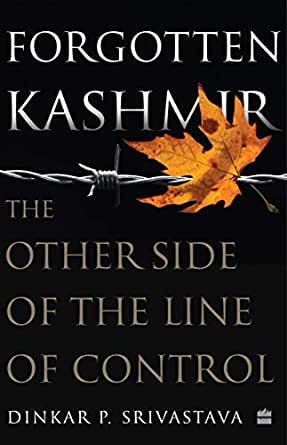


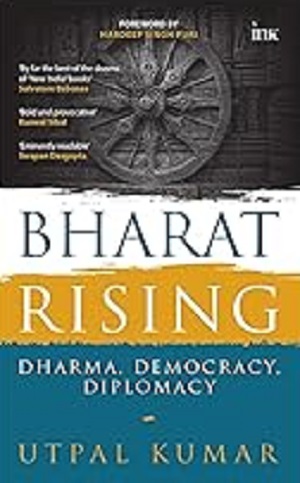
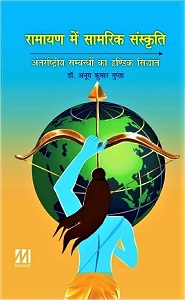
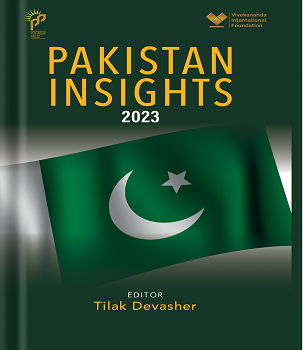
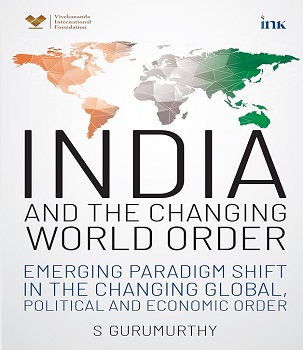
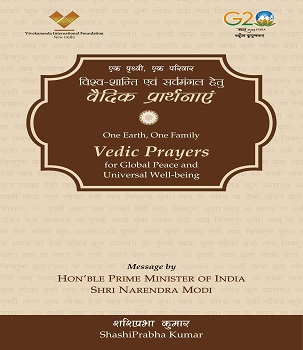
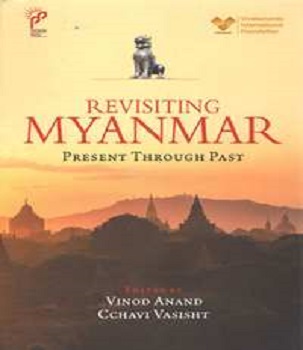
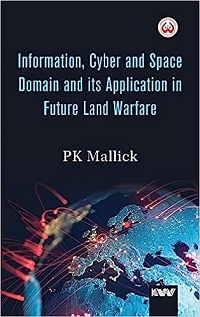
Post new comment